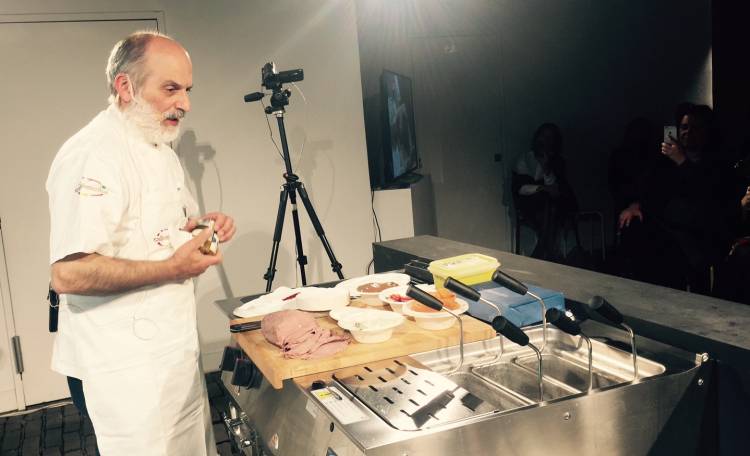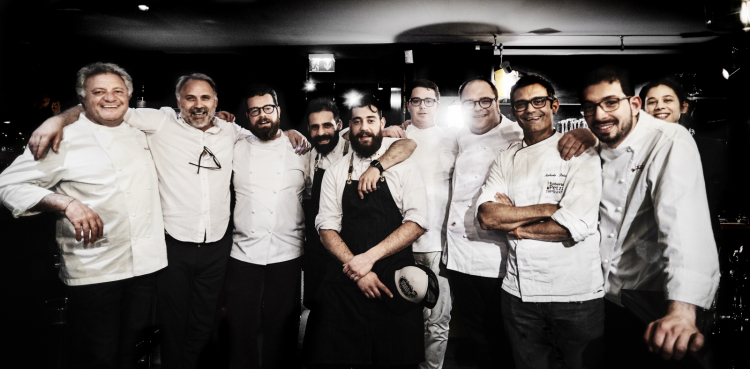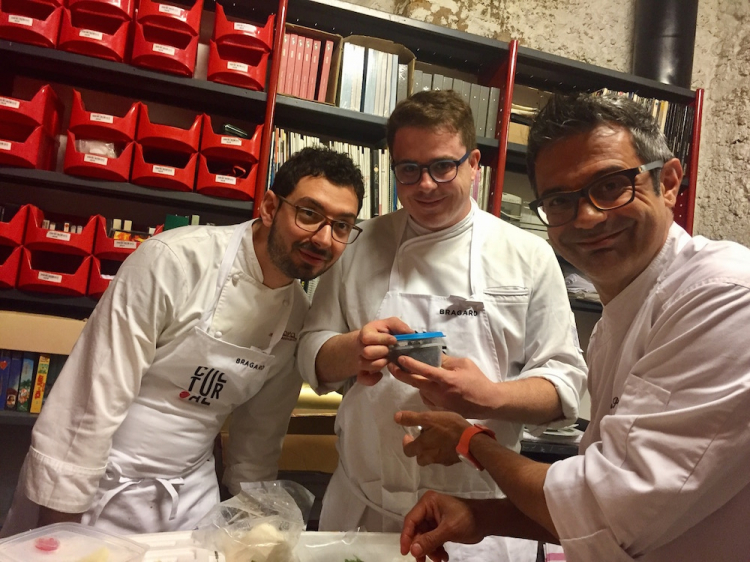In Parisi, three days of sun and spring warmth accompanied the 4th edition of Cultural, the Festival di Cultura Alimentare dedicated to food culture. The adjective that was not explicitly indicated in the headline is “Italian” culture as 90% of the master classes at the Bastille Design Center, a short walk from Marais, were given by chefs, pizzaioli and pastry chefs working on this side of the Alps.
The remaining 10% had a strong Italian mark to them. As in the case of Brazilian acrobat Mauricio Zillo, who’s been in the Ville Lumiere for a year and a half after the essential internship at Rebelot in Milan («I miss Italy», he reassured «I think I’ll be back»). Or Christophe Santaigne, who runs a sound bistro in Paris and cancelled any distance separating Sicily from his homeland in Normandy with a dish of tripe.
Or the antipasta served by Columbian Roy Caceres from Rome, a dehydrated fish soup in the shape of tagliatelle, a laborious exploration of the Futuristic-Marinettian principle rejecting pasta. Or, at the opening of the Festival, the rich addition of extra virgin olive oil in the dish of Parisian chef Bruno Verjus from Table, almost sacrilegious given the butter and jus foundations of the Ville Lumière.

Corrado Assenza, top professional in the 3-day event in Paris
Italian cuisine is as popular as ever, in other words. Yet this is not enough. Communicating it, again, and again, and again, is also necessary. To the French media, above all, but also to buyers, who were not to be seen. Plus the quality must always be high, avoiding the persisting of easy-to-make stereotypes (such as: «basil, mozzarella, tomato, white-red-green, and hurray for Italy») that could be found everywhere for decades, spreading across five continents an image of Italy that has nothing to do with the current picture. And stronger attention must also be paid to giving value to chefs’ ideas, which were not given strong attention at
Cultural due to organisational and logistic glitches.
This doesn’t mean we didn’t have the chance to devotedly listen to the precepts of
Corrado Assenza, pastry maker in
Noto, Sicily, the real guest star in the Parisian event: forget semi-processed products or thickeners and yes, and always, to naturally sweet ingredients and inspirations coming from all over the Mediterranean area, not just the west. All these concepts were materialised in two tastings that captured the audience, attracted by the idea of antipodal desserts compared to the geometries showed off in the city’s window shops.

Peppe Guida, Mauro Bochicchio, Eugenio Boer, Christian and Manuel Costardi, Vitantonio Lombardo, Roberto Petza and Antonio Biafora (photo by Marco Varoli)
We also tasted the overpowering flavours of the Spaghetto cooked in lemon water and provolone from
Vican Peppe Guida, the
Costardi brothers’ iconic Risotto with tomato,
Eugenio Boer’s explosive Cibreo, the seafood and earth elegance of
Roberto Petza, the
struncatura saved from oblivion by
Antonio Biafora, the verve of
Michele Farnesi, originally from Tuscany but now at home in
Paris. We carefully listened to the stories of
Oro e oro from
Calabrian Nino Rossi, also based on tomato and oil, two pillars in our cuisine. We followed the “good” kilometre of
Cristoforo Trapani, originally from Naples but working in
Tuscany who turns a necessity into a virtue «If I find a good ingredient one thousand kilometres away, I can’t understand why I shouldn’t use it».
The Italian speakers close to the Bastille seemed to agree on one point: «Simplicity is not easy to make». Among others, this was successfully explained by two pizzaioli,
Gennaro Nasti and
Gennaro Battiloro, who’s also Neapolitan and asked for political asylum further to the north of the
Tyrrhenian Sea: kneading, he said, is not a mechanical gesture that you can replicate with alienation. It is the result of responsible gestures, that require equal attention to that used to select flour and topping ingredients.

Antonio Biafora, Nino Rossi and Roberto Petza
Finally, there were happy and mourning moments. The celebrations were at the end of the two gala dinners organised by
Mauro Bochicchio at
Flow, a bateau-mouche docked on the banks of the Seine in front of the magnificent Pont des Invalides, with the Eiffel Tower shedding its lights on the left. As usual, the two teams of great Italian chefs made an excellent impression, supporting each other in makeshift kitchens. Laudable, strongly praised.
A veil of melancholy arrived during the master classes of
Angelo Sabatelli and
Christian and
Manuel Costardi. «We dedicate our lessons to
Bob Noto», they explained with emotion, «a man who significantly contributed with his talent to our growth and that of the entire system».